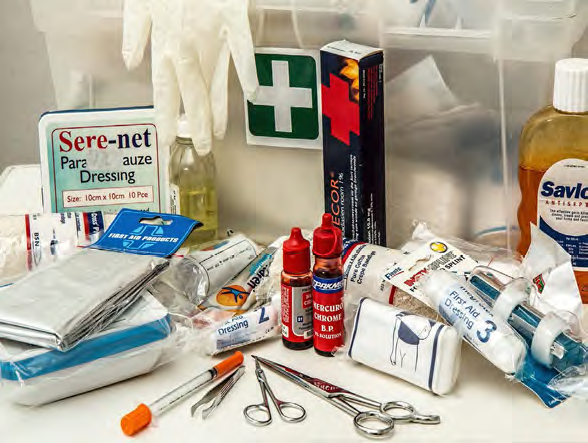Recommended Residence Hall First Aid Kits
The American College of Emergency Physicians has compiled a list of items it believes should be in every first aid kit. This kit should be kept together in one place, and everyone should know where it is, as well as how to use each item in the kit. This list will provide you with the necessary “tools” to handle many medical emergencies while at school. All items are readily available from your local pharmacy. For the kit itself, a small tote bag is recommended because it is large enough to hold all items listed, it is easily transported (even on vacation), and it is big enough to be visible wherever it is kept.
Contents:
- Acetaminophen, Ibuprofen, and aspirin tablets: For headaches, pain, fever, and simple sprains or strains of the body. (Aspirin should not be used for relief of flu symptoms nor given to children)
- Ipecac syrup and activated charcoal: For treatment after ingestion of certain poisons. (Use only on the advice of a poison control center or the emergency department)
- Elastic Wraps: For wrapping wrist, ankle, knee, and elbow injuries.
- Triangular Bandage: For wrapping injuries and making an arm sling.
- Scissors with rounded tips
- Adhesive tape and 2” gauze: For dressing wounds.
- Disposable, instant-activating ice bags: For icing injuries and treating high fevers.
- Bandages of assorted sizes: For covering minor cuts and scrapes.
- Antibiotic ointment: For cuts and scrapes.
- Gauze in rolls and in 2” and 4” pads: For dressing wounds.
- Bandage closures, ¼” and 1”: For taping cut edges together.
- Tweezers: To remove small splinters and ticks.
- Safety pins: To fasten splints and bandages.
- Gloves: (preferably nitrile or vinyl – avoid latex gloves due to possible allergies) to protect your hands and reduce the risk of infection when treating open wounds.
- First Aid Manual
- List of emergency phone numbers

